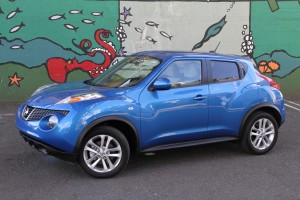
With demand for vehicles like the 2011 Nissan Juke growing by double-digits in recent months, is the U.S. car market heading towards all-time record territory?
The U.S. automotive market could recover faster than many had foreseen, analysts from IHS forecast Wednesday, with volumes likely to surge past the 17 million mark by mid-decade.
A variety of factors, ranging from immigration to an upturn in the economy will likely push the recovery, noted senior analyst Michael Robinet. But there are some factors that could restrain the market, as well, including the likely rise in vehicle prices.
Not everyone echoes the optimistic IHS forecast, however, and some industry leaders are planning for a significantly lower peak during the current economic cycle.
November’s sales numbers are doing a lot to buoy industry optimism. The month saw volumes surge to their highest level of the year, an annualized rate of 12.2 million vehicles – with only Toyota among all the major makers posting a decline.
For the year as a whole, said Robinet, during an appearance before the Detroit Automotive Press Association, motor vehicle sales should reach 11.9 million, a major improvement from last year’s dismal 8.6 million – one of the worst downturns since the Great Depression.
For 2011, IHS is forecasting sales will climb to 12.8 million, and by 2015, the research firm sees U.S. volumes nearing the all-time peaks set a half decade ago, at 17.1 million.
The slow but burgeoning economic upturn is clearly a factor, according to Robinet. Since the economy took its unexpected nosedive, the industry has sold about 20 million fewer vehicles than if it had continued on the previous cycle’s trendline. So, pent-up demand is clearly a factor.
Then there’s the steady flow of immigrants, which will boost demand, as well, he said. And there’s also the emergence of the Millennials, many of whom are just getting their driver’s licenses.
All told, he noted, “The U.S. will add 25 million new drivers over the next 10 years.” And while many of those will opt for used cars, the surge will certainly help prop up demand for new vehicles, as well.
Another factor, said Robinet, is that automakers are “engineering demand” by adding significant new content that will draw buyers back into showrooms. And government regulators are doing much the same thing as they push for safer, cleaner and more fuel-efficient vehicles.
But that could be the proverbial two-edged sword. While new, high-tech vehicles may be more appealing, “Vehicle prices are going to rise as a result,” cautioned Robinet. As a result, “I think there are going to be customers priced out of the new vehicle market.”
Others, however, will more likely downsize or “move down-market,” added Robinet, rather than trade down to a used car.
The new IHS forecast is decidedly more optimistic than what some observers have been predicting, other analysts foreseeing the current cycle peaking out at a much lower 15 million or so.
Higher prices could be a factor, but so could “a fundamental shift in American buying habits,” General Motors’ sale chief, Don Johnson, told TheDetroitBureau.com. With vehicles proving more and more reliable, there is less pressure to trade in a three or four-year-old vehicle. And the newfound focus on value could reduce the number of vehicles that American families feel they need to own.
As a result, it is a “very realistic” possibility, said Johnson, that the industry won’t see another 17-million peak anytime soon.
But with the last two months showing positive momentum, few analysts now foresee a double-dip to the automotive market, either.
